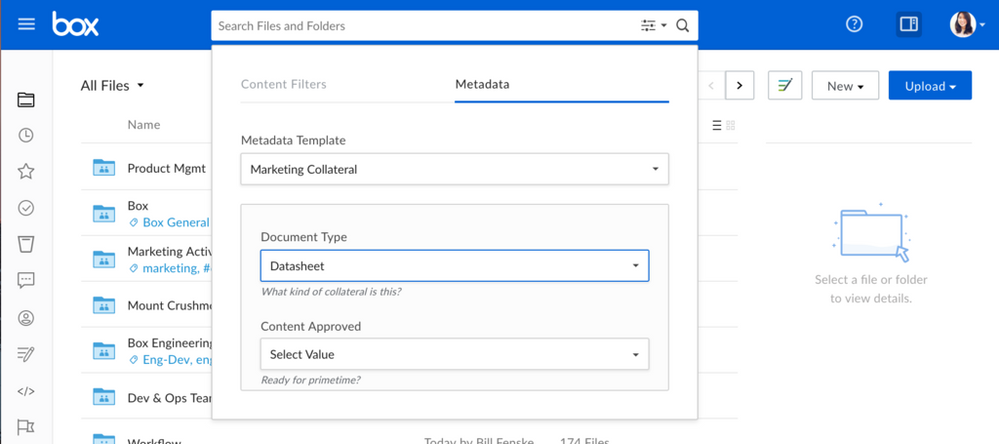Metadata allows your managed users to define and store custom data with their Box files. As an admin, you can create templates to track attributes like owners, project names, or release dates. This helps organize, search, and understand your Box files more efficiently. Refer to Box's end-user metadata documentation for more benefits and use cases.
👉 Check out Customizing Metadata Templates article for more details including some notes and reminders related to metadata.
Below is your quick guide in customizing metadata templates — from creating, to editing, deleting, and hiding metadata templates.
🔵 Creating Metadata Templates
-
In the Admin Console, in the lefthand navigation click Content.
-
Toward the top of the page, click Metadata.
-
Click Create New.
-
Click Name Your Template and enter a name.
-
Create a name for your first attribute by clicking into the Name Your Attribute field.
-
Click the Format down arrow and select the type of data your managed users can enter into the attribute you are creating.
-
Use the Description field to incorporate additional information about the attribute.
-
Click New Attribute to add additional attributes.
-
Use the Status drop down to indicate whether this template is Visible to your managed users or Hidden for the time being.
-
Click Save.
🔵 Editing Metadata Templates
-
In the Admin Console, in the lefthand navigation click Content.
-
Toward the top of the page, click Metadata. A list of metadata templates displays.
-
Click on the template you wish to edit.
-
Make your changes and click Save.
🔵 Deleting Metadata Templates
- You can delete metadata templates using the Metadata Template Deletion API. This is not yet available in the Admin Console.
- Once you have deleted a given metadata template, the metadata template instances that are associated with your files will also be deleted. This action cannot be undone.
🔵 Hiding Metadata Templates
-
In the Admin Console, in the lefthand navigation click Content.
-
Toward the top of the page, click Metadata. A list of metadata templates displays.
-
Click on the template you wish to hide.
-
From the Status dropdown menu, select Hidden.
Related articles:
Do you have related questions about metadata? Please post your comment below and we’d be glad to help!

